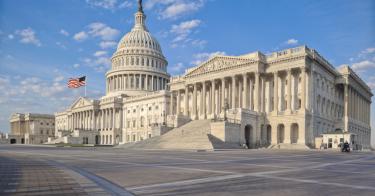In October, Senate leaders made a strategic decision:they would not try to use the budget reconciliation process to repeal parts of Dodd-Frank, lest it sink tax reform. Now that tax reform is over, however, financial regulatory reform is back on the table.
The Senate Banking Committee, led by Chairman Mike Crapo (R-Idaho), has put together a reform bill with bipartisan support. Sponsors of the Economic Growth, Regulatory Relief, and Consumer Protection Act (S. 2155) include one independent and 11 Democrats. Just before Christmas, the bill passed out of committee with affirmative votes from all 12 Republican members and four Democratic members.
The Senate bill is more narrowly targeted than the Financial CHOICE Act (H.R. 10), the bill that the House passed in June, but they have much in common. While S. 2155 does not really roll back Dodd-Frank, it does include similar versions of 15 CHOICE Act provisions.
Most significantly, both bills include a type of regulatory off-ramp. In the CHOICE Act, the ramp comes in the form of a capital election. It provides regulatory relief to all banks that choose to maintain a higher equity/capital ratio, thus improving their ability to absorb losses and reducing the likelihood of taxpayer bailouts. Banks that make such an election would be exempt from, among other regulations, any federal law, rule, or regulation addressing capital or liquidity requirements, and any of the “heightened prudential standards” implemented by section 165 of Dodd–Frank.
The off-ramp offered in S. 2155 is more limited. It provides relief from risk-weighted capital requirements for only some banks. Specifically, the Senate ramp is open only to what federal regulators typically view as community banks: those with total assets of less than $10 billion.
Actually, that’s a pretty expansive asset threshold. Of the nation’s nearly 5,000 commercial banks, fewer than 150 have assets exceeding $10 billion.
At first glance, then, it looks like virtually all U.S. banks qualify for capital regulatory relief under the S. 2155 off-ramp. But there’s a catch.
The Senate bill also authorizes federal regulators to disqualify banks for this regulatory relief—even those that meet the new leverage ratio. They can be blocked from taking the off-ramp by their risk profile.
In particular, a bank well under the asset ceiling can still be disqualified, based on regulators’ assessments of the institution’s off-balance-sheet exposures, trading assets and liabilities, total notional derivatives exposure, and “such other factors as the appropriate Federal banking agencies determine appropriate.” The idea seems to be to prohibit relief to banks that engage in so-called risky behaviors.
On the surface, this catch makes the off-ramps in the CHOICE Act and S. 2155 appear very different, perhaps even irreconcilable. The details, however, reveal a very different picture.
First, the CHOICE Act uses a different leverage ratio, one that explicitly accounts for the very same risk profile activities that S. 2155 identifies.
By definition, banks that engage in these activities will have to raise more equity to meet the ratio in the CHOICE Act. And, of course, banks that do not engage in these activities will easily meet either requirement.
For these reasons, the two approaches simply are not very different.
The issue will likely remain contentious, though, because many liberals still cling to the notion that unregulated banks, engaged in these risky activities, caused the 2008 financial meltdown. But that’s simply not the case.
Long before the financial crisis and Dodd-Frank, federal regulators had—and used—the authority to regulate banks’ off-balance-sheet exposures, trading assets and liabilities, and derivatives exposures. All of the bank activities that set the financial crisis in motion were already heavily regulated, and none of it was done in secret.
In fact, regulators blessed (as safe) many of the activities that caused financial difficulties. They set up the very system that came apart.
It often seems as though nobody in Congress wants to admit it, but nothing a bank does is riskier than take in short-term demand deposits to make long-term loans.
Furthermore, prohibiting banks from using derivatives and making trades for their own books will not lead to a safer banking system. It will lead to a narrowly invested, non-diversified set of financial institutions—a situation likely to produce widespread failures in a crisis.
The CHOICE Act off-ramp employs an approach much closer to this reality, so hopefully Congress can eventually work out a compromise that looks more like the CHOICE Act off-ramp.
It shouldn’t be too hard, because their starting positions are actually quite similar.
This piece originally appeared in Forbes https://www.forbes.com/sites/norbertmichel/2018/01/09/senate-inches-closer-to-financial-reg-reform/3/#652deb7853a9





